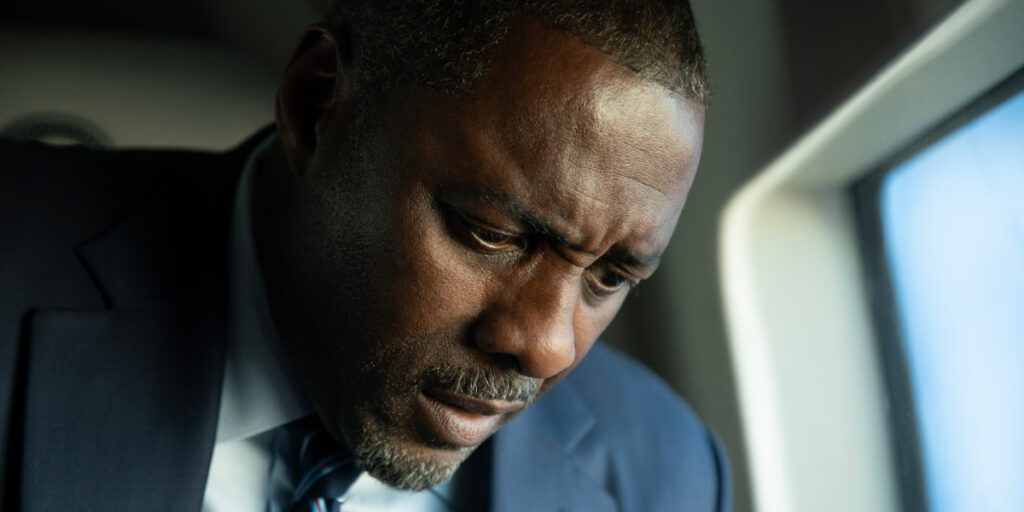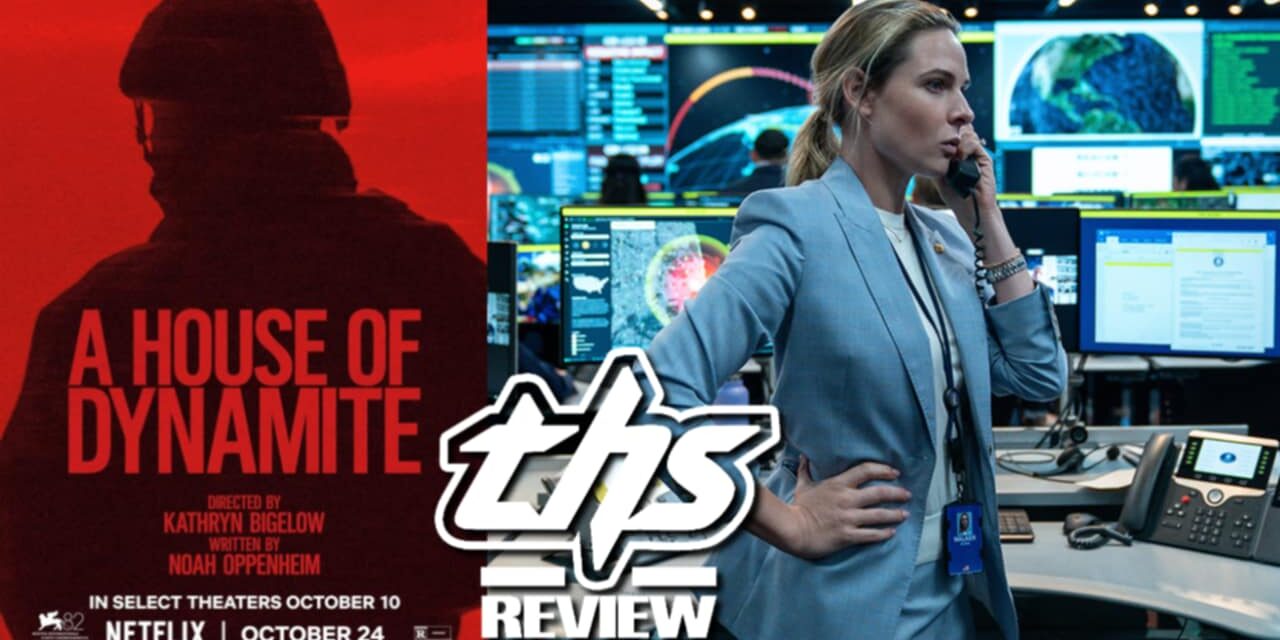Since the dawn of the atomic age, there have been a healthy number of stories that engage in the paranoia of nuclear war. However, there are only a handful that truly dig into the machinery that makes this existential threat a constant concern, like A House of Dynamite does. While Oppenheimer is something that’d count as a more adjacent tale, this premise is best embodied in films like Fail Safe. A fictional scenario where the human process, and its mortal cost, are seen from start to finish devastating finish, director Kathryn Bigelow embarks to make another movie of that sort.
Her approach harkens back to Sidney Lumet’s bleak classic, right down to the star-studded cast. Showing the U.S. response to a surprise, Dynamite’s roughly real-time depiction of various viewpoints is a novel touch. Cutting closer to the edge of disaster with each replay, the framework used to depict the story doesn’t kill any of the tension. Admittedly, the only thing holding writer Noah Oppenheim’s story back from fully delivering its payload is a substantial third-act misfire that will leave everyone talking. Unfortunately, it’ll be for all the wrong reasons.
A House Of Dynamite Sees Bigelow Back In Her Socio-Political Bag
It’s been almost a decade since Kathryn Bigelow’s previous directorial effort, Detroit; so this return to form has been a long time coming. Even with the hurdle I mentioned above in place, A House of Dynamite is totally gripping from start to finish. Through a wide cast of characters, three vignettes anchored by Rebecca Ferguson, Gabriel Basso, and Idris Elba explore the same short span of events in great detail.
In essence, Ms. Bigelow made a new version of 2008’s Vantage Point, albeit she actually uses the premise to its full potential. We hear military lingo spouted by various officials on hand, but we never feel left to sink or swim. There are even helpful title cards that’ll spell out acronyms for specific locations, which ultimately point out the purpose of A House of Dynamite. It’s not so much a finished product that holds the audience’s hand, but rather remembers to guide them through the alphabet soup governmental/military based procedurals love to indulge in.
Like its predecessors before it, this picture is supposed to warn us of how chillingly human the process of nuclear retaliation is. We’re brought most of the way there in the process, via the craftsmanship that the director of Zero Dark Thirty has shaped throughout her career. That fact is also helped by a murderer’s row of talent that’s been assembled to occupy every slot this ambitious ensemble piece has to offer.

The All Star Cast Helps Maintain The Tension, Even In An Atypical Narrative Structure
What really struck me when it came to A House of Dynamite’s cast is how varied it is with the actors it employs, and how it uses them. The supporting bench of notables like Tracy Letts, Greta Lee, Anthony Ramos, and Moses Ingram cannot be praised enough. All help turn the wheel of the larger plot in motion – no matter their respective allotments of screen time. Both the relatively seasoned and fresh faced cast members shine, taking their places with authority; and that applies to the more foreground players as well.
As the breakout star of The Night Agent, Gabriel Basso is already a Netflix mainstay that leads an action-heavy political thriller. In A House of Dynamite, he plays Deputy National Security Advisor Jake Baerington – a character who steps up in the middle chapter “Hitting a Bullet with a Bullet” and tries to save the day. It’s a role that one could see as a stand-in for Tom Clancy’s Jack Ryan, and I say that with all due respect; as he’s a pivotal player in the middle act of this atomic drama narrative.
The scene where Jason Clarke’s Director of the White House Situation Room helps advise him through talking with Russia’s foreign minister is the sort of human potboiler that I appreciate in films like this. Key details/moments are repeated to a degree through each go-around. It’s the spectacular performances from the entire House of Dynamite cast that allow them to never feel forced or redundant when they’re reprised through the other side of the line.

A House Of Dynamite Is Unnerving And Provocative, Until It Pulls One Major Punch
I hate to even mention the major hang up I have with this overall narrative. Seeing as the buzz surrounding this project has already highlighted the problematic nature of the ending, it’s not exactly a secret. After all of the tension and chaos that build to A House of Dynamite’s final reprise of events, the conclusion that lands (or rather, doesn’t) fumbles the nuclear football.
The reason that movies like Fail Safe or The Day After were so powerful were because they showed the full folly of nuclear war. I get that there may have been a notion that the ending isn’t the point of what this tale is trying to tell us, but I wholeheartedly disagree with that suggestion. There’s a reason people still talk about those previous entries in the world of nuclear paranoia to this day: those pictures didn’t shy away from the endgame. The devastation is the point, teaching us a lesson on screen that we should never want to learn in real life.
A House of Dynamite falls short of that mark, and in such a way that doesn’t feel as open ended as some are saying. Rather, it’s if a scene or two was cut at the last minute from the film’s epilogue. I still admire the overall product, as the technical and performative prowess on display is still sharp for the majority. At the same time, it’s undeniable that the final moments betray the whole purpose of this exercise, through a miscalculated wager on what to show and what to tell. Your mileage may vary with Dynamite, but it’s still very much worth watching – even if you’ll be more likely to question the ending before discussing the chilling near-reality that preceded it.
For more on Reviews, make sure to check back to That Hashtag Show.



![Black Butler -Emerald Witch Arc- Ep. 2 “His Butler, Sounding The Alarm”: Witch Of The Castle [Review]](http://18.211.146.234/wp-content/uploads/2025/04/2c22b741-1105-4b36-b807-3130b0dd3330-440x264.jpg)

